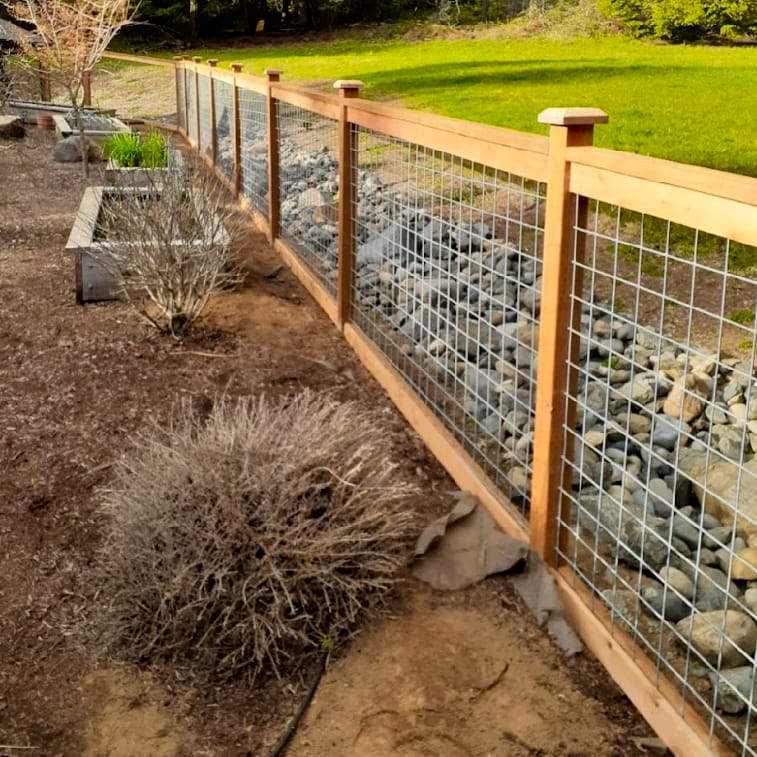All Categories
Featured

Mounting a fence around your residential or commercial property is a superb way to enhance protection, personal privacy, and aesthetic charm. Here's a step-by-step overview on how to prepare your residential or commercial property for a fence installment.
- Determine Your Building Lines. Developing a fence on or over your residential or commercial property line can lead to disagreements with next-door neighbors or also legal problems. This step will guarantee that your fencing is set up in the correct place.
- Examine Local Zoning and Permit Needs. Various towns have differing regulations concerning fence installment. Prior to you begin digging holes, check with your local zoning division to determine if there are any type of constraints or permit demands for fence installment.
- Clear the Installment Location. One of the most important steps in preparing your home for a fence is getting rid of the area where the fence will be set up. The fencing installation process will go a lot a lot more smoothly if the area is clear, and the employees will certainly have even more room to dig article holes and set up the fencing.
- Mark Underground Utilities. Before you begin excavating, it's important to inspect for any type of underground energies that could hinder the installment. Gas lines, pipes, electrical cords, and sewer lines are frequently hidden under the ground. Contact your utility companies to have them note the location of these energies along the fencing line. In many locations, there is a totally free service readily available that will certainly send specialists to note energy lines before you dig. Digging into these utilities can result in substantial damages, security hazards, and pricey fixings.
- Communicate with Your Neighbors. Mounting a fence can impact your next-door neighbors, specifically if it's a shared limit. It's a good idea to have a conversation with your neighbors prior to beginning the project. Allow them learn about your plans and review any type of potential concerns. This can help avoid misconceptions and enable you to address any type of issues, such as fence elevation or positioning, that may arise. A polite discussion can also prevent potential disputes in the future.
- Select the Right Fencing Style and Materials. Take time to pick a fencing design and product that best matches your needs, aesthetic preferences, and budget plan. Consider factors like the design, elevation, and durability of the fencing. Wood, vinyl, light weight aluminum, and chain-link prevail fencing materials, each using various benefits. Additionally, think of your long-lasting maintenance demands. For example, wood fencings require more upkeep than plastic fences, which can be a vital element if you desire a low-maintenance option.
- Establish a Budget. Fencing projects can vary in price depending upon the size of your property, the kind of products utilized, and the complexity of the installment. Before starting the project, established a reasonable budget plan that consists of the expense of products, labor, allows, and any type of unanticipated costs. Demand quotes from several professionals to compare prices and guarantee you're obtaining a reasonable deal. if you're hiring a professional fencing installer.

- Plan For Installation Day. When all the preparations are total, ensure your property is ready for the installment team. Offer clear access to the installation site, and maintain children and family pets securely away from the workspace. You may also wish to have an assigned place for the service providers to park their automobiles and store devices throughout the project.
Conclusion. Preparing your property for fence installment can save you money and time over time while ensuring the process goes smoothly. By establishing your home lines, checking for licenses, clearing the setup area, and communicating with next-door neighbors, you'll be setting yourself up for a successful job. Correct prep work is key to a hassle-free fencing installation that improves the security, privacy, and beauty of your building.
Latest Posts
Bid Farewell to Scrubbing Up: Bath Fitter's Easy Washroom Upgrade
Published Apr 28, 25
1 min read
Searching for Full-Service Car Maintenance Locally? Car-X St. Louis Delivers Quality and Convenience
Published Apr 28, 25
1 min read
Why Vinyl Fencing from Montana Fencing is the Smart Option
Published Apr 27, 25
1 min read
More
Latest Posts
Bid Farewell to Scrubbing Up: Bath Fitter's Easy Washroom Upgrade
Published Apr 28, 25
1 min read
Searching for Full-Service Car Maintenance Locally? Car-X St. Louis Delivers Quality and Convenience
Published Apr 28, 25
1 min read
Why Vinyl Fencing from Montana Fencing is the Smart Option
Published Apr 27, 25
1 min read